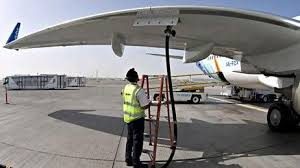
A new report indicates the demand for jet fuel is growing worldwide—thanks to low oil prices, a fast-growing and expanding middle class in Asia and booming freight markets. It’s not just at airports in Oklahoma City, Tulsa and around the Midwest.
But there is a potential risk of a greater penetration of sustainable aviation fuels according to new research from refining markt analysis by business information provider IHS Markit.
It believes global jet fuel demand will increase from nearly 8 percent of total refined product demand in 2017 to more than 10 percent by 2040. IHS Markit’s study contends the global market for jet fuel will reach more than 9.5 million barrels a day by then compared with the demand of nearly 7.45 million barrels a day in 2018.
“Thanks largely to low oil prices and strong growth in air travel, particularly in Asia, jet fuel is a fast-growing product, with global jet-fuel demand growth comfortably exceeding 4 percent in the last two years,” said Louise Vertz, director, refining and marketing research at IHS Markit, and lead author of the IHS Markit analysis. “In a refined-fuel market that has had sluggish annual growth of just shy of 1.5 percent overall, that is a bright spot for refiners, and is one of the few refined products we expect to see gain consistent demand growth through 2040.”
Air travel will only see an increase in the coming years.
Air travel growth is set to continue its strong performance. The International Air Transport Association’s (IATA) mid-year economic report for passenger traffic—measured in revenue passenger kilometers (RPKs)— is expected to grow by 7 percent in 2018, after increases of 7.4 percent and 8.1 percent in 2016 and 2017, respectively. Freight, which is measured in freight ton kilometers (FTKs), is expected to grow 4 percent in 2018, down from 9.7 percent in 2017, which, for context, was more than double the 3.6 percent performance seen in 2016, and the strongest year since the rebound from the global financial crisis.
It is little surprise then that jet fuel has outperformed most other oil products in registering annual growth of more than 4 percent in 2016 and 2017, and will continue to perform well, with average annual growth projected at more than 2 percent to 2025, IHS Markit said.
Sandeep Sayal, vice president of refining and markets research at IHS Market said the increase in travel has come about because of lower fuel costs and lower ticket prices.
“One of the biggest factors in jet-fuel demand, on a global level, has to do with increased wealth in the form of rapid expansion of the middle class, particularly in Asia. This has had a major impact on air travel, and we expect this trend to continue, particularly in emerging markets, as about 160 million people are expected to join the middle class each year to 2025,” Sayal said.
The firm’s study found that overseas travel in Asian countries will overtake the rest of the markets in the mid-2030s as aviation markets are rapidly growing in China, India and Indonesia.
The Middle East is the next biggest contributor to jet-fuel demand growth, with approximately 340,000 barrels per day growth to 2040, gaining a 2 percent market share to reach 9 percent of global jet demand.





